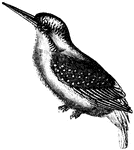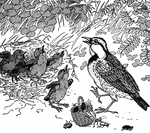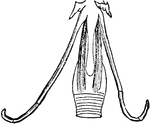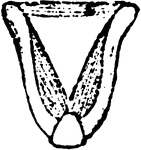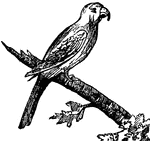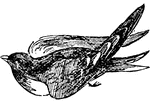
Kingfisher
"They sometimes take a position near some steam and remain for hours immovable. When a fish comes within…
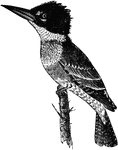
Belted Kingfisher
"Ceryle alcyon. Belted Kingfisher. Upper parts, broad pectoral bar, and sides under the wings, dull…
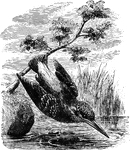
Common Kingfisher
Alcedo Ispida. European Kingfisher. Small bird, upper parts blue-green; under parts orange; rump and…

Racquet-Tailed Kingfisher
"Tanysiptera, the Racquet-tailed Kingfisher or "Paradise Kingfisher", the sexes may be similar or dissimilar,…
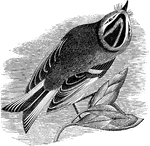
Golden Crested Kinglet
"Upper parts olive-green, more or less bright, sometimes rather olive-ashy, always brightest on the…

Kirombo
"Leptosoma discolor, the Kiromobo or Vorondreo of Madagascar, and the Comoro Islands, which has a big…
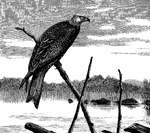
Red Kite Resting on a Branch by a Body of Water
"Milvus milvus, the Red Kite or Forked Tail Glead of the Old World, ranging from the Atlantic Islands-except,…
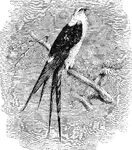
Swallow-tailed Kite
"Elanoides forficatus. Swallow-tailed Kite. Adult: Head, neck, band on rump, and entire under parts,…
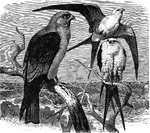
Two Swallow-tail and One Mississippi Kites
Two Swallow-tail and One Mississippi Kite. "Ictinia subcaerulea. Mississippi Kite. General plumage plumbeous…

Kiwi
The Kiwi, a native of New Zealand is closely related to the Ostrich but much smaller. It is also a flightless…

Kiwi
Kiwi, Apteryx australis, of the South Island, is lighter (than the Apteryx mantelli of North Island),…

Kiwi
The Kiwi, a native of New Zealand is closely related to the Ostrich but much smaller. It is also a flightless…
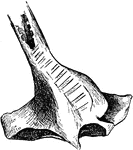
The Bony Labyrinth of a Sea Duck
"Bony labyrinth at the bottom of the trachea of the male Clangula islandica, seen from behind." Elliot…

Land-Rail
The Crex pratensis, Land-Rail, or Cork Crake, is mostly brown with the upper parts spotted, a blue-green…

Lapwing
Lapwings may often be seen settling in fields recently ploughed, where they can find an ample supply…
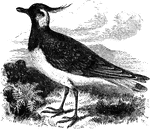
European Lapwing
"The glareoles (Glareolidae) are a remarkable Old World form, like long-legged swallows, wth a cuckoo's…
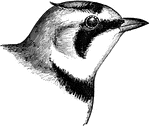
Shore Lark
"Shore Lark or Horned Lark. Upper parts in general pinkish-brown, this pinkish or vinaceous or liliaceous…

Shore Lark
"Shore Lark or Horned Lark. Upper parts in general pinkish-brown, this pinkish or vinaceous or liliaceous…

The Laryngeal Muscles of a Rook
"a, b, c, d, inferior laryngeal or syringeal muscles, not well made out in this figure; But typical…

The Larynx Muscles of a Rook
"Muscles of the larynx. thyro-arytenoids, or openers of the glottis" Elliot Coues, 1884
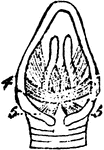
The Larynx Muscles of a Rook
"Muscles of the larynx. Thyro-cricoids, posterior thyro-cricoids." Elliot Coues, 1884

The Larynx of a Rook
"Larynx viewed from before (below); a, thyroid bone or cartilage." Elliot Coues, 1884

The Larynx of a Rook
"Larynx viewed from behind (above); a, thyroid bone; b, b, its appendages; c, cricoid; d, d, arytenoids;…

The Larynx of a Rook
"Larynx viewed from the right side; a, thyroid; b, appendage; c, cricoid; d, arytenoid; f, f, cartilage…
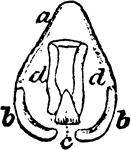
The Larynx of a Rook
"Larynx viewed from behind; a, thyroid; b, b, its appendages; c, cricoid; d, d, arytenoid." Elliot Coues,…
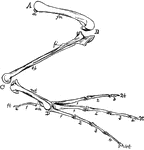
Bones of a Bird's Hind Limb
"Fig 34 - Bones of a bird's hind limb: from a duck, Clangula islandica. A, hip: B, knee: C, heel or…
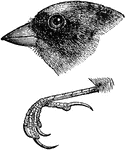
Red-poll Linnets
"Bill small, short, straight, very acute, more or less compressed, the lateral outlines usually a little…

Archaeopteryx Lithographica
"Archaeornithes is at present represented by but one member, the first undoubted fossil Bird, made known…
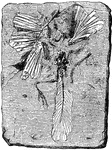
Archaeopteryx Lithographica
"Oldest known ornithological treatise, illustrating also the art of lithography in the Jurassic period,…

Black-breasted Longspur
"Rhynchophanes maccowni. Black-breasted Longspur. Bay-winged Longspur. Upper parts slate-gray, streaked…
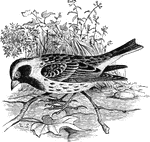
Lapland Longspur
"Centrophanes lapponicus. Lapland Longspur. Whole head, throat and breast jet-black, bordered with buffy…

Loon
The loon is a diving bird that finds its food under the water. It will dip its bill into the water and…

Loon
The loon is a diving bird. Its peculiar cry, sometimes resembling a hysterical laugh, has given rise…

Common Loon
"Colymbus torquatus. Common Loon. Great Northern Diver. Adult: Bill black, the tip and cutting edges…
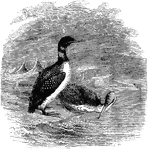
Loons
"Colymbus torquatus. Common Loon. Great Northern Diver. Adult: Bill black, the tip and cutting edges…
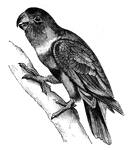
Lory
The Lory is a climbing bird distinguished by the fact that the feet have four toes each, of which two…

Love birds
Love birds are the smallest of this group; their plumage varies in shades according to the climates.…

Lyre-bird
"Menura superba, the Lyre-bird, of New South Wales and South Queensland, some thirty-three inches long,…

Lyre-bird
"The Lyre-bird of Australia, Menura superba, to show the unique lyrate shape of the tail." "... the…

Macaw
The Macaws, the largest of the Parrots, are recognizable from their bare cheeks and long tapering tails.
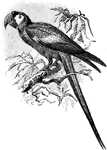
Macaw on Branch
Macaws are small to large, often colorful New World parrots. Macaws are native to Mexico, Central America,…
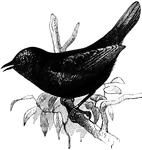
Magellanic Tapaculo
Scytalopus magellanicus. "A genus of South American formicarioid passerine birds, of the family Pteroptochidae.…

Magpie
A bird of the crow family, closely related to the jays but distinguished by having a much longer and…

A Magpie Sitting on a Tree Branch Looking Down While Surrounded by Other Trees
"The Pica rustica, or Magpie, extends through the Palaearctic Region, and reaches Formosa and North…

magpie
"Pica. rustica hudsonica. Lustrous black, with green, purple, violet, and even golden iridescence, especially…
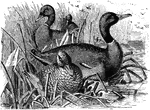
Mallards
"Anus boscas. Mallard. Wild or Domestic Duck. Green-head. Bill greenish-yellow. Feet orange-red. Iris…
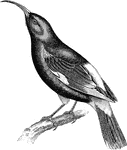
Mamo
"Drepanis pacifica, the Mamo, is black, with golden rump, upper and under tail-coverts, tibiae, and…
Man and Animals Divider
A decorative divider with a man in the center, surrounded by plants and animals.
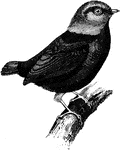
Red-capped Manakin
Pipra mentalis, the Red-capped Manakin, has black plumage with a red head, neck, and thighs.
